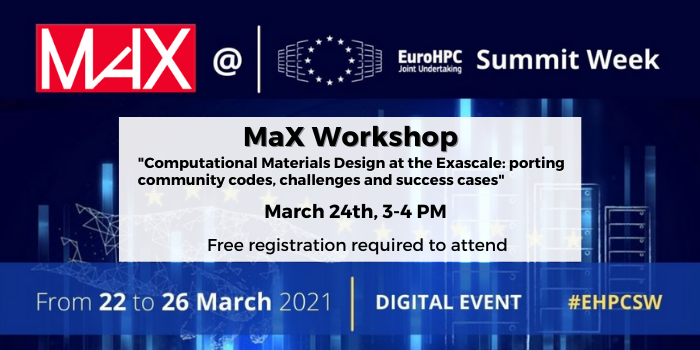Highlights from last winter gatherings of MaX code developers
Yambo Developers’ Meeting
The virtual Yambo developers’ meeting was held in December 2020. The meeting was scheduled for three consecutive “Yambo-Fridays” (Dec. 4th, 11th, and 18th) and attended by the whole-at-large Yambo developers’ Team (30 researchers from all around the world).
Notably, the meeting allowed the team to share all current developments and to discuss and shape the future of the Yambo project. Many aspects of the code have been discussed, from new features to technical aspects and development tools.
New features include the calculation of Circular dichroism spectra, Magnons description, Exciton-phonon interaction, Phonon dynamics and more, and clearly highlight the lively scientific activity triggered by the Yambo project as a cradle for scientific development.
This is also supported by a continuous technical improvement of the code. Developers keenfully discussed the porting of Yambo on GPU machines and the extension of the current CUDA-Fortran porting to additional backends (OpenACC, OpenMP5), important to support in full the EuroHPC pre-exascale machines (Leonardo, LUMI and MareNostrum V).
Workflows and automatization tools were main topics: Yambo is developing a native python layer, called whypy, a collection of python tools for post-processing and automation, which is going to work as an interface to the AiiDA workflow manager. Notably, an automatic convergence workflow for GW was presented.
Finally, coming to user support and the training of new users, the organization of new documentation and learning material was discussed and a virtual school to be held in spring was scheduled.
Quantum ESPRESSO Hackathon
Last January, the Quantum ESPRESSO developers community organized a virtual hackathon (three Fridays in a row, from 15th to 29th) to e-meet all the QE developers, to have update on the ongoing activities and efforts on the QE distribution, to discuss and brainstorm on new developments and implementations.
The 39 QE developers divided into four working groups to discuss of various topics.
First, a team focused their work on the GPU version of the code, discussing the best practice in coding after the merge of the GPU branch with the main one. A second small group worked on a development for computing magnon excitations, and on wrappers of general functions using linear response applications. Another interest of the QE developers lied in refactoring the input description for DFT+U calculation, and a dedicated group integrated it with novel developments.
The hackathon meeting was also an opportunity for the developers to work on improvements of specific features for their current scientific projects and the outcome of such developments already entered in the devel- branch of the code.



